The Rise and Rise of Emoji Marketing
Published on July 14, 2016/Last edited on July 14, 2016/6 min read
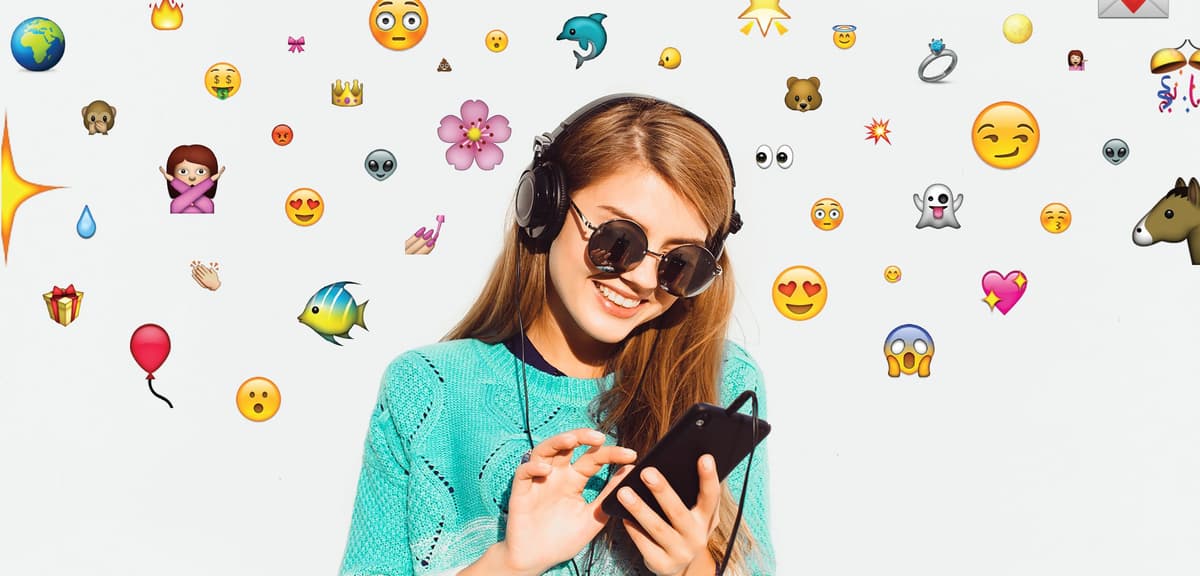

Todd Grennan
Content Production Principal, Content Marketing at BrazeEmojis are blowing up.
Five years ago, they were all but unknown outside of Japan. But following Apple’s 2011 decision to add emoji support to the iPhone, emojis have seeped into mainstream culture the world over: becoming a regular feature in SMS and messaging app conversations; inspiring an upcoming big budget Hollywood movie; even infiltrating works of classic literature. And as emojis become a fixture in our day to day lives, brands are beginning to take serious notice.
Download the Appboy Emoji Study
World Emoji Day: A bellwether for today’s marketer?
You can see this increased attention in the rise of World Emoji Day. This holiday, which is celebrated every July 17 (because that’s the date shown on the iOS calendar emoji), was established in 2014 by Emojipedia founder Jeremy Burge in order to “promote the use of emojis and spread the 😋 enjoyment that they bring to all of those 👬👫👫👭 around us.”
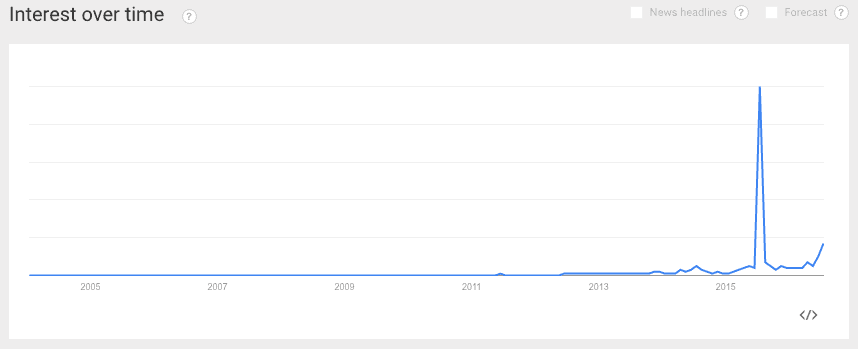
Google Trends results for “World Emoji Day”
While the holiday received limited attention its first year, by 2015 it was broadly embraced, with brands such as Pepsi, McDonald’s, JIF, GE, Anheuser-Busch, and Ford all taking the opportunity to engage their customers on social media and beyond by leveraging the popularity of emojis. And as this year’s Emoji Day approaches, even more companies are expected to get involved. But brands’ use of emojis in their marketing doesn’t stop there.
Emoji marketing is becoming more common and more effective
The meteoric rise of emojis, both in marketing and in the wider culture, has led some to express concern that we’re in the midst of an emoji glut, where overuse of this new medium results in customer fatigue and a possible backlash.
But new research on emoji use conducted by Appboy (that is, us) has found that the facts on the ground suggest something quite different. Rather than overwhelming customers, marketers are seeing stronger results from messaging campaigns that include emojis even as the number of emoji marketing campaigns continues to rise.
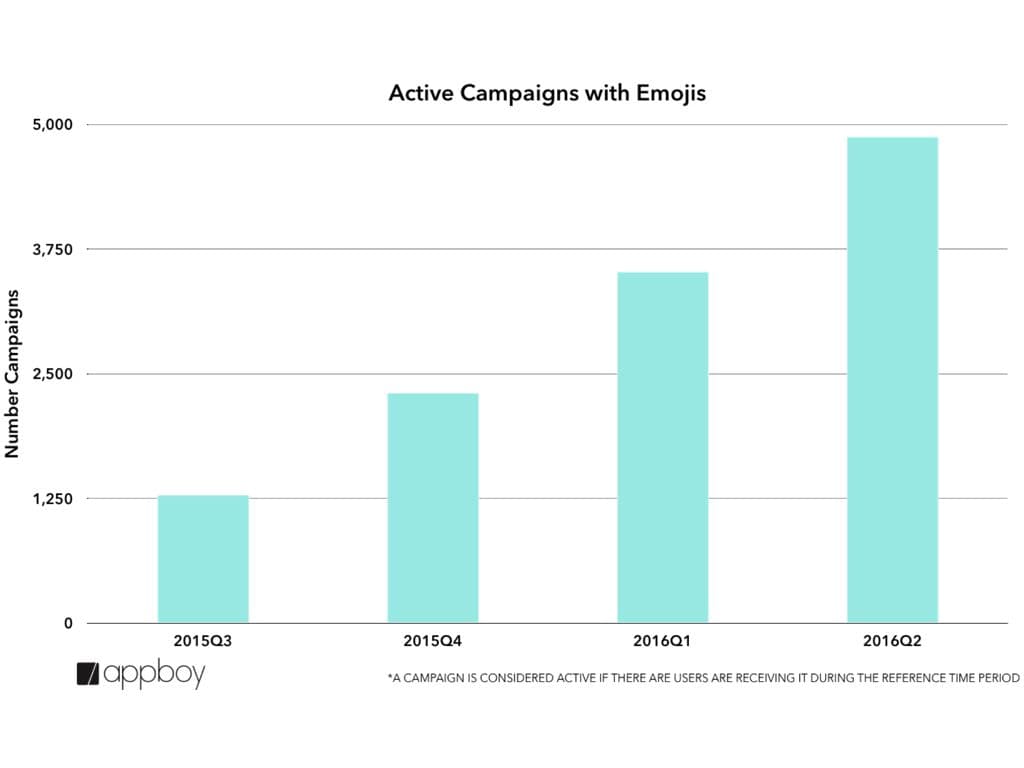
Over the past 12 months, the number of active customer messaging campaigns that include emojis has increased by 609%. More than 800 million emoji messages were sent in June 2016, up from 145 million in June 2015. That increase is even more pronounced among Android push campaigns, which has grown 848%.
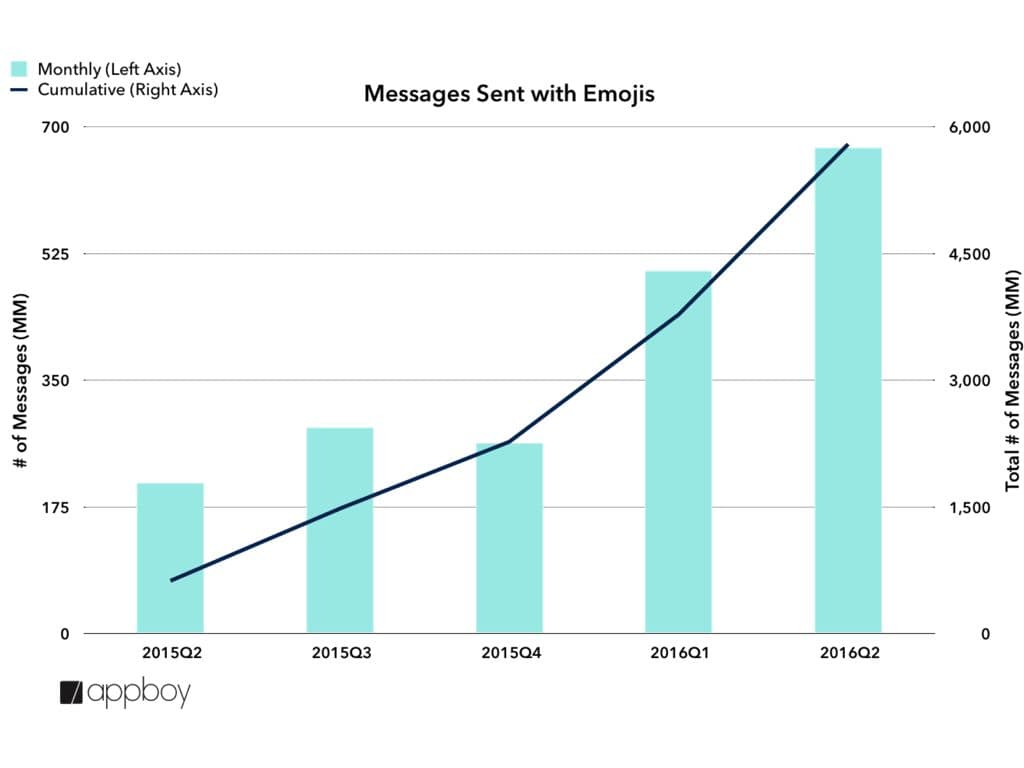
And while emoji use continues to trend upward, brands are also doing a better job targeting their emoji campaigns to customers. While some emoji messaging campaigns in early 2015 were blasted to millions and millions of users, since October 2015 the average size of an emoji marketing campaign stabilized around 325,000 recipients, give or take about 50,000. That suggests that brands are increasingly taking advantage of segmentation and message targeting to deliver messages with emojis to customers who are likely to be interested in receiving them.
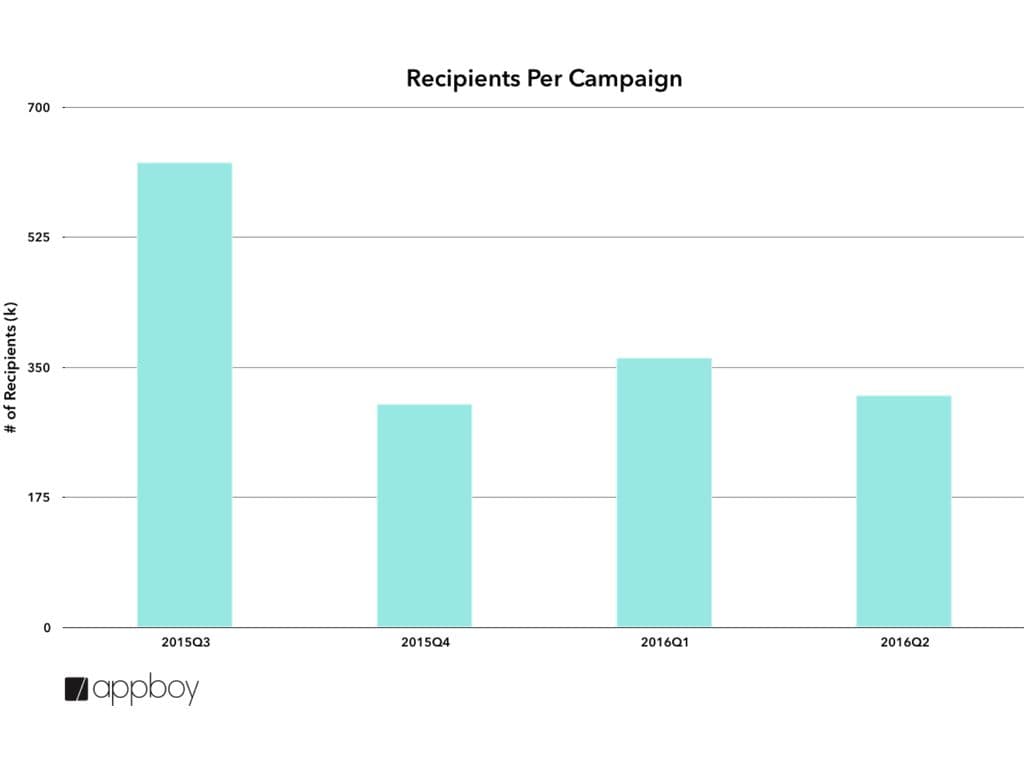
That approach appears to be paying off. Since June 2015, the open rates for iOS and Android push notifications containing emojis have increased by 210% and 1,063%, respectively, year over year.
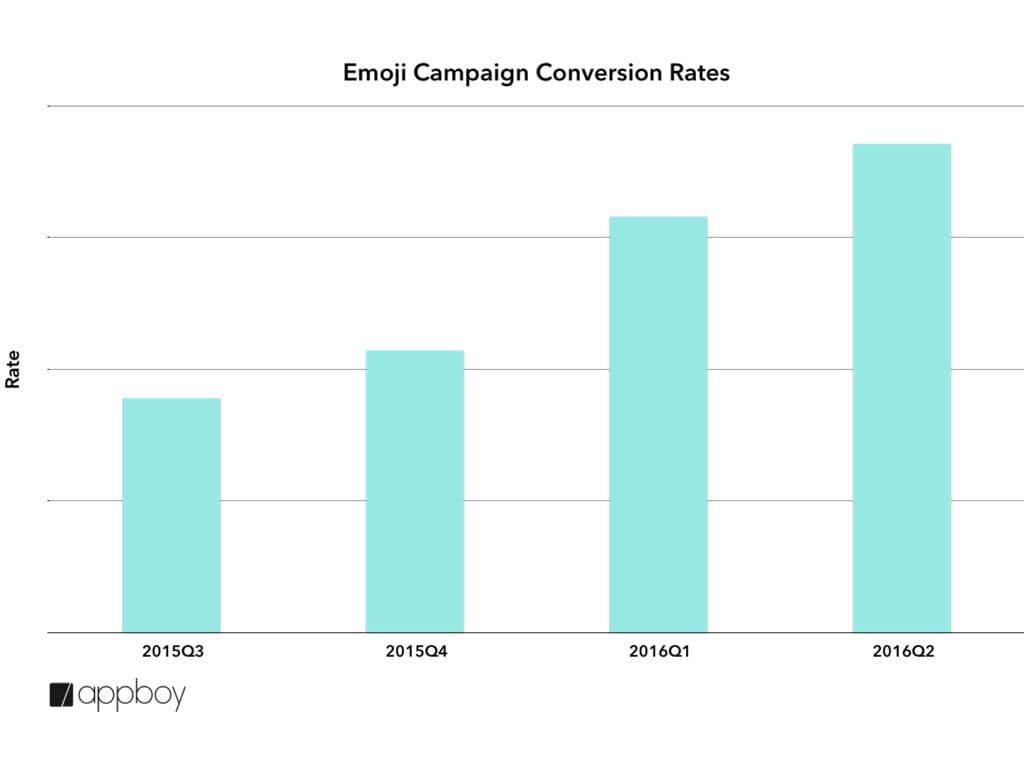
Conversion rates associated with emoji messaging campaigns have also increased 135% during that time, though other factors beyond the use of emojis could potentially be impacting the number of conversions produced by individual campaigns.
The truth about emojis: People really like them
As exciting as the growth of emoji-driven customer outreach has been for marketers, there’s reason to believe that even stronger growth is possible. To better understand consumers’ views on emojis and emoji marketing, Appboy recently used Pollfish to conduct a poll of more than 500 people and found widespread positive sentiments toward emojis and their use by brands.
In general, people are really into emojis. The poll found that more than 64% like or love emojis, compared to only 6% who dislike or hate them. And consumers are exposed to emojis regularly in their everyday life: 87% use them in their own personal texting and messaging and 68% receive a message with emojis from friends or family once a day or more.
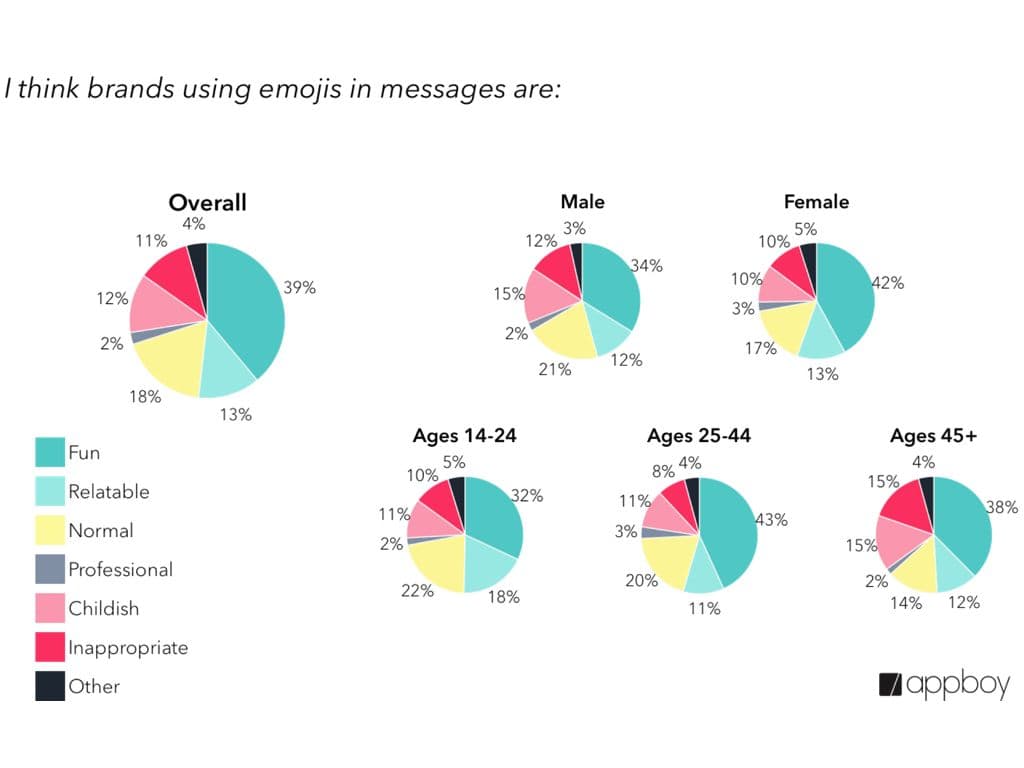
In even better news for marketers, 39% of respondents said that they found it to be fun when brands use emojis in their outreach—easily the most popular response. And despite the steady rise in emoji-focused messaging campaigns, most respondents are hardly being inundated: 60% receive messages with emojis from brands no more than once a month, and 35% have never received an emoji campaign.
How marketers can make the most out of emojis
The popularity of emojis represents a major opportunity for brands, but only if they’re thoughtful about the ways they incorporate emojis into their customer outreach.
Start slowly with emoji marketing
The poll found that 65% of respondents felt that SMS or social media were the best channels for emoji marketing, likely reflecting their personal experiences to date with brand emoji use. That doesn’t mean that customers will respond negatively to receiving emails, push notifications, or in-app messages that contain emojis—but it does mean that recipients aren’t necessarily expecting to receive emoji messages in these channels.
If your brand starts off its emoji messaging by flooding users’ inboxes or notification centers with emoji-packed messages, you run the risk of turning them off. Instead, start slow and limit your use of emojis to a subset of your total messaging. You’ll get customers used to receiving this kind of outreach and get a better sense of what sorts of emoji messaging resonate with your brand’s unique audience before you scale up your emoji marketing.
Reach the right customers with your emoji messages
While a majority of the responses were positive about brands using emojis in their outreach, our poll did find that a significant subset of customers find emoji marketing inappropriate (11%) or childish (12%). That means that marketers who want to take advantage of emojis in their messaging should make sure they’re taking steps to avoid sending emoji campaigns to customers who don’t respond to them. You can use audience segmentation to target continued emoji outreach to customers who engaged with your initial emoji campaigns, and use multivariate testing to make sure that you’re only using emojis in messages when they make that outreach more effective.
Stay current with emoji marketing
Download the Appboy Emoji Study
Download our free Appboy Emoji Study for an even deeper dive including a look at the data monthly and more survey results. For more information on the history of emojis and how they can be used in your marketing, check out our guide to emoji marketing and our Winter 2016 Emoji Marketing Report.
Want examples of how other brands are using emojis? Consult our blog post on emoji marketing by media brands and see what companies like Disney, NASCAR, and VH1 are doing with this powerful new medium.
Be Absolutely Engaging.™
Sign up for regular updates from Braze.
Related Content
View the Blog
How Android 16 and iOS 26 are reshaping customer engagement

Haley Trost

Proven customer retention strategies for building loyalty and reducing churn
July 02, 2025
Introducing OfferFit by Braze: Answering burning questions
